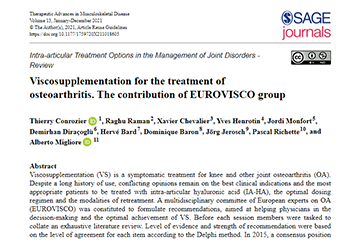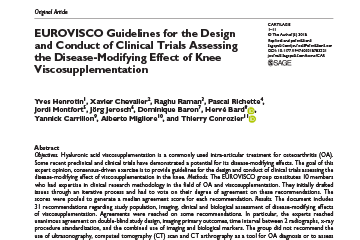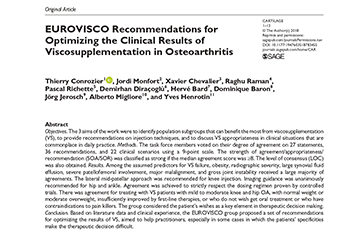
New Publication about Cuivramine® with the PREDOA Study conducted on more than 2000 patients
Guidelines recommend symptomatic slow-acting drugs for OA (SYSADOA) to reduce pain and avoid the use of NSAIDs. However, the main issue with slow-acting treatments is the poor adherence.
In this study, we could observe an excellent compliance, higher than expected with this type of background treatment (usually around 60% after 6 months).
These very good results are mainly due to the high safety and the significant improvement experienced by the patients.
To improve adherence, detailed information about therapeutic objectives is necessary in active patients who do not get any other medications and for whom it is their first treatment for OA.
An excellent compliance : 80%
A very good safety : 97%
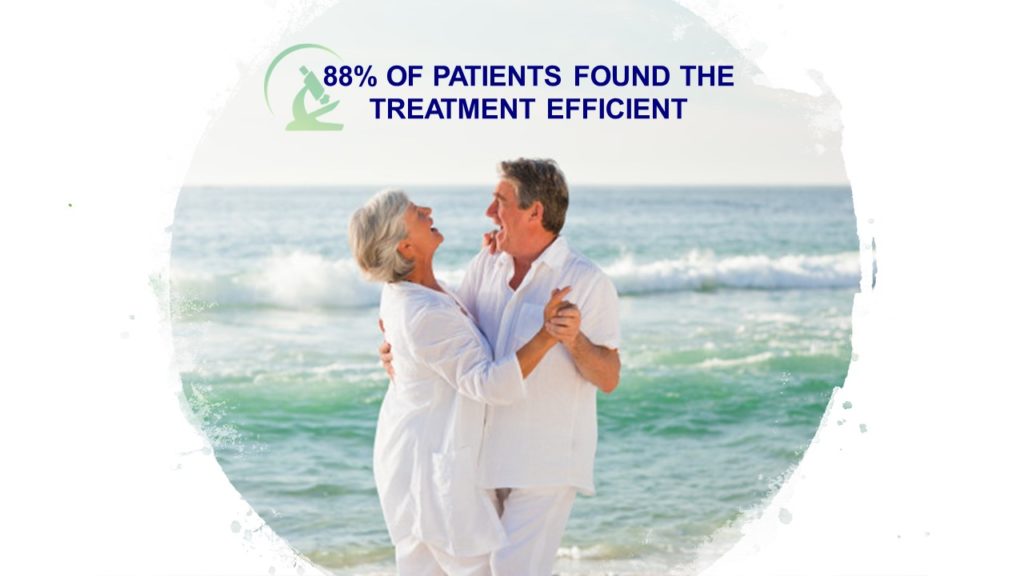
Background: Osteoarthritis (OA) management needs a combination of nonpharmacological and pharmacological modalities. However, as in many chronic conditions, the main concern with OA therapy is the difficulty in obtaining good medication compliance over a long period. The PREDOA study aimed to investigate the predictive factors of adherence to treatment in patients with OA treated with glucosamine sulfate (GS)–copper sulfate–ginger root (GCu), a symptomatic slow-acting drug for OA.
Methods: Ambulatory patients with a clinical diagnosis of OAwere included in a prospective (6 months) multicenter open-label observational study. All patients received two capsules of GS-GCu once daily for 6 months. Demographics, disease features (OA location, symptom duration, concomitant therapies, comorbidities), and patient self-assessment of pain (0–10) were obtained at baseline. At month 6, the investigator collected patient self-assessments of treatment observance, reasons for nonadherence, pain scores, patient perceptions of treatment efficacy, changes in analgesic intake, and occurrence of adverse events. Predictors of observance were studied in univariate and multivariate analyses.
Results: A total of 2,030 patients were included in the study. At baseline, the average pain score was 6.4±1.7. Observance was good in 80% of patients. It was weaker in active than retired patients (P=0.005) in patients not taking concomitant treatment (P=0.008) or who had never been treated for OA (P=0.001). Observance was correlated with pain decrease (P<0.0001) and with lack of adverse effects (P<0.001). Age, sex, pain level at baseline, OA location, and number of painful joints were not related to treatment compliance.
Conclusion: Medication compliance with GS-GCu depends both on the safety–efficacy balance and several patient related-factors. To improve adherence, detailed information about therapeutic objectives is necessary in active patients who do not get any other medications and for whom it is their first treatment for OA.
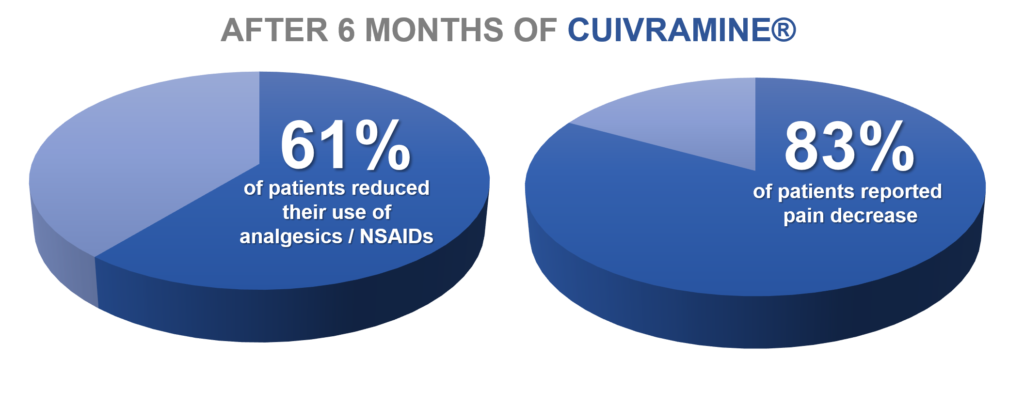
Read the Full Text

